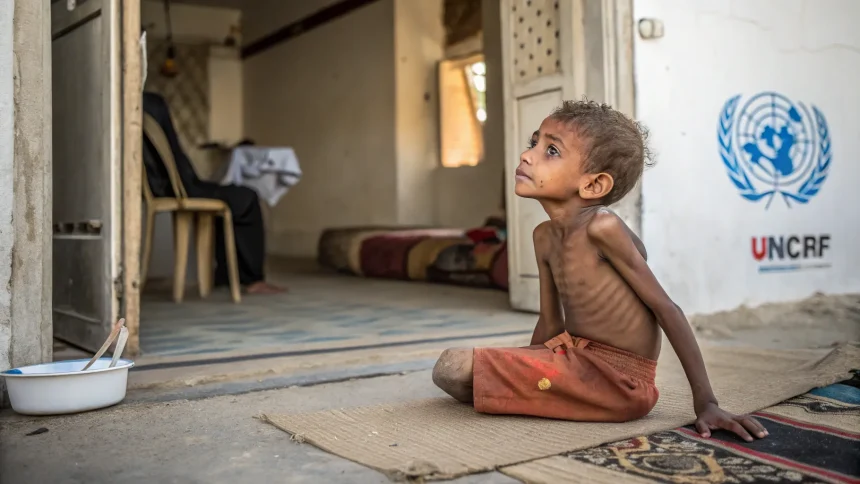The World Health Organization (WHO) has determined that approximately 20 percent of children in Gaza are suffering from acute malnutrition, raising serious concerns about both immediate health risks and long-term developmental consequences for an entire generation.
This alarming assessment comes amid ongoing conflict in the region, which has severely disrupted food supply chains, medical services, and humanitarian aid delivery. Health experts warn that the nutritional crisis has reached emergency levels, with children being the most vulnerable victims.
Health Crisis Deepens in Gaza
According to the WHO’s findings, the malnutrition crisis has intensified in recent months. Acute malnutrition—characterized by rapid weight loss and wasting—puts children at immediate risk of life-threatening complications including weakened immune systems and increased susceptibility to disease.
Medical professionals working in the region report seeing increasing numbers of children with visible signs of malnutrition, including muscle wasting, distended abdomens, and developmental delays. Local hospitals, already struggling with limited resources, are now facing an influx of malnourished patients requiring specialized care.
Long-Term Consequences
The WHO’s assessment highlights that the impact of this crisis extends far beyond immediate health concerns. Malnutrition during critical developmental periods can cause permanent physical and cognitive damage that may persist for generations.
Children who survive severe malnutrition often face lifelong health challenges, including:
- Stunted growth and reduced adult height
- Compromised cognitive development and lower IQ scores
- Weakened immune systems and increased vulnerability to chronic diseases
- Higher risk of developing metabolic disorders later in life
These effects can persist across generations through epigenetic changes, creating a cycle of health disadvantages that becomes increasingly difficult to break without substantial intervention.
Humanitarian Response Challenges
Relief organizations face significant obstacles in addressing the crisis. Access restrictions, security concerns, and damaged infrastructure have hampered efforts to deliver therapeutic foods and medical supplies to affected areas.
The WHO and partner organizations have called for immediate humanitarian corridors to allow nutritional supplements, medical supplies, and trained personnel to reach children in need. Without swift action, health officials warn that mortality rates among children could rise dramatically in the coming weeks.
“This is not just about current suffering—we’re witnessing the potential loss of human potential that will affect Gaza for decades to come,” a WHO representative stated in their assessment.
Public health experts emphasize that treating severe malnutrition requires specialized therapeutic foods and medical protocols. Even with immediate intervention, children who have experienced prolonged malnutrition may require years of nutritional support and healthcare to recover fully.
The situation in Gaza represents one of the most severe nutritional emergencies in recent years, with the scale and intensity comparable to famines in conflict zones across Africa and Asia. International aid organizations have urged all parties to prioritize humanitarian access to prevent further deterioration of the crisis.
As the situation continues to evolve, health monitoring systems remain critical for tracking malnutrition rates and directing resources to the most affected areas. Without a sustainable solution to food insecurity in the region, experts fear the health impacts documented by the WHO will become increasingly difficult to reverse.








